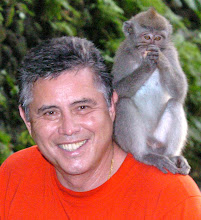While adult tigers don’t normally scale tree trunks, cyclone fences, or concrete walls, they have the ability to do so when adequately motivated. And on that fateful day something in front of Tatiana’s enclosure finally motivated her to do it.
Zoos are under ever-increasing pressure to display animals in naturalistic exhibits with visual barriers between animal and viewer minimized. Two of the biggest obstacles to developing such exhibits are that (1) they can be extremely expensive to design and construct, and (2) they can be incredibly difficult to make escape proof. San Francisco Zoo had taken an interim step, modifying old exhibits to make them more naturalistic habitats for their tigers and African lions.
I think SF Zoo did a fine job of naturalizing those archaic exhibits at minimal cost. I would assume that those are meant to be temporary, and that the zoo's long range plan includes upscale exhibits for the big cats. As far as safety goes, since the exhibit from which Tatiana escaped had been inspected and approved by American Zoo Association experts, it is reasonable that the SF Zoo Administration should have believed they were safe. One must realize that in modern American zoos top level administrators are often hired mainly for their business management skills, and may know little or nothing about animals. Zoo staff members who understand the animals best usually are the keepers, and all too often they have little or nothing to say about how exhibits are designed.
Anyone realizing what tigers are capable of doing—as opposed to what they normally do—might have guessed that a tiger that really wanted to could get out of Tatiana’s enclosure at San Francisco Zoo. Standing upright against the moat wall and extending her front paws as high as possible, a tiger Tatiana’s size could have reached at least ten feet up the wall. That means she’d only have to jump another couple of feet to get a claw hold on the top of the wall and pull her self up and out, clawing the moat wall with her hind feet for leverage. As easy as that sounds, one of the enclosure’s side walls appeared to me to be even simpler to climb, and the top of that wall was a bridge to the visitor viewing area. Anyone might have guessed—but no one could have known—that she’d ever do it.
Zoos strive to make their enclosures more naturalistic because naturalistic enclosures are better for the animals and they provide visitors with more satisfying and educational experiences. They can give visitors a feeling of being immersed in the animals’ habitat with them, imbibing the visitor with greater respect and appreciation for the animals and their native habitats. For the animals, the structural complexity of naturalistic exhibits makes them physically and psychologically more stimulating and provides places for them to escape sun, weather, and the view of visitors when they want to.
San Francisco Zoo’s patas monkey exhibit and Oakland Zoo’s tiger enclosure are good examples of naturalistic exhibits, even if they don't accurately mimic the animals' native habitats. One does not have to be an animal expert to tell that the patas monkeys could escape from their enclosure if they wanted to—and some have—but having a monkey running free is very different from having a tiger roaming the neighborhood.
Monday, January 28, 2008
Subscribe to:
Post Comments (Atom)

No comments:
Post a Comment